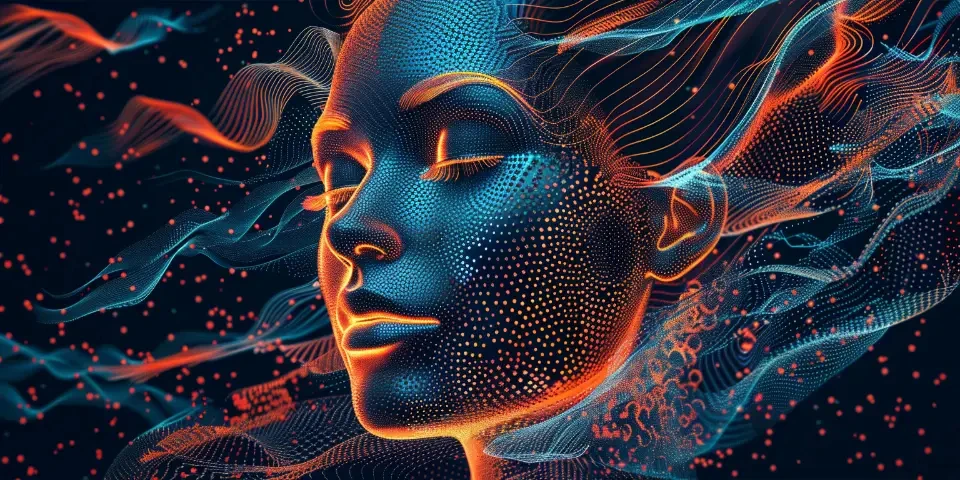AI News Anchors The Rise of Digitally Created Journalists
With the rapid advancement of artificial intelligence (AI) technology, we are witnessing a groundbreaking phenomenon?the emergence of AI news anchors. These digitally created journalists are revolutionizing the field of journalism, presenting news in a completely new way. In this article, we will explore the various aspects of AI news anchors and their impact on the industry.
1. What are AI news anchors?
AI news anchors refer to computer-generated virtual journalists that use machine learning algorithms to analyze and present news stories. These anchors have realistic appearances and can mimic human speech patterns and facial expressions, making them look and sound like genuine news presenters.

There are various AI systems currently being used to develop news anchors, such as China's Xinhua News Agency's AI anchor, which was created using deep learning technology. These anchors have the ability to read news scripts and present them in a lifelike manner, improving their authenticity.
2. The benefits of AI news anchors
AI news anchors offer several advantages over traditional human anchors. Firstly, they can work around the clock without the need for breaks, ensuring news is constantly delivered. This not only increases efficiency but also allows news agencies to provide real-time updates to their audiences.
Secondly, AI news anchors are not prone to human errors or biases, as they rely solely on the data and algorithms they are programmed with. This ensures that news presented by AI anchors is objective and unbiased, enhancing trust in the information delivered to the public.
Additionally, these virtual anchors are capable of multitasking and handling a vast amount of data, making it easier for them to analyze complex topics and provide in-depth insights. This enables news agencies to cover a wider range of news stories more effectively.
3. The limitations of AI news anchors
While AI news anchors offer numerous benefits, there are also limitations to their capabilities. One of the main drawbacks is the lack of human emotion and intuition, which can make news delivery appear robotic and less engaging. Human anchors often bring a sense of personality and empathy to their reporting, which AI anchors struggle to replicate.
Another limitation is the dependence on pre-programmed data. AI news anchors heavily rely on the databases they are equipped with, meaning they may struggle to provide context or analysis on breaking news stories where there is limited existing information. This limitation hinders their ability to offer unique perspectives or investigative reporting.
4. The evolving role of human journalists
With the rise of AI news anchors, the role of human journalists is changing. Rather than being entirely replaced, human journalists are now collaborating with AI technology to enhance their reporting. They can use AI systems to gather and analyze data, fact-check information, and improve the efficiency of their research.
Human journalists also continue to play a crucial role in conducting interviews, bringing in-depth analysis and interpretation to news stories, and adding a personal touch to reporting. The collaboration between humans and AI ensures a more comprehensive and balanced approach to journalism.
5. Ethical considerations
The advent of AI news anchors raises a range of ethical considerations. One major concern is the potential for misinformation or deepfake manipulation. As AI technology advances, there is a possibility that AI news anchors could be misused to spread false information or misleading narratives.
Additionally, AI news anchors could have implications for job displacement within the journalism industry. As AI becomes increasingly capable of presenting news, there may be a reduction in demand for human anchors, leading to job losses and a shift in the job market.
6. The future of AI news anchors
The future of AI news anchors is promising, with advancements continuously being made in their development. As technology improves, AI anchors may become even more realistic, incorporating features like real-time facial expressions and improved natural language processing.
Furthermore, the integration of AI with virtual reality (VR) and augmented reality (AR) could potentially create a fully immersive news experience. Viewers could interact with AI news anchors in a virtual environment, further blurring the line between reality and digital journalism.
Conclusion
The rise of AI news anchors marks a significant shift in the field of journalism. While they bring numerous benefits such as increased efficiency and objectivity, their limitations and ethical considerations must be carefully addressed. The collaboration between AI and human journalists will likely shape the future of news reporting, with technology enhancing and complementing the skills of human reporters. As AI continues to evolve, it is vital to find the right balance between innovation and the preservation of ethical journalism standards.
FAQs
Q: Can AI news anchors completely replace human journalists?
A: No, AI news anchors cannot entirely replace human journalists. While they can present news efficiently and objectively, they lack human qualities such as emotion, intuition, and investigative skills that are crucial in journalism.
Q: Are AI news anchors more reliable than human anchors?
A: AI news anchors are less prone to human errors and biases, which contributes to their reliability. However, they heavily rely on pre-programmed data and can struggle with breaking news and unique perspectives, which human anchors can provide.
Q: What impact could AI news anchors have on journalism jobs?
A: The rise of AI news anchors may lead to job displacement within the journalism industry, as technology becomes more capable of presenting news. However, human journalists can still collaborate with AI technology to enhance their reporting and adapt to the changing landscape.
References
[1] Xinhua's AI anchor, the world's first male artificial intelligence (AI) news anchor. (2019, May 21). Xinhua Net. URL: https://www.xinhuanet.com/english/2019-05/21/c_138077835.htm
[2] Cheng, E. (2018, November 14). How China's state media created a virtual anchorwoman. Reuters. URL: https://www.reuters.com/article/us-china-media-ai-idUSKCN1NJ1Z0
Explore your companion in WeMate